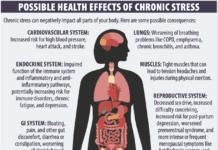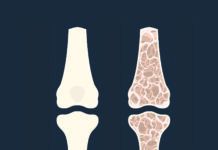 Richard D. Siegel, MD, is the co-director of the Diabetes and Lipid Center at Tufts Medical Center.
Richard D. Siegel, MD, is the co-director of the Diabetes and Lipid Center at Tufts Medical Center.
Shifts to healthy eating and physical activity with moderate weight loss can reduce the risk for type 2 diabetes. An intervention called the Diabetes Prevention Program (DPP) provides intensive lifestyle counseling with the goal of helping participants lose seven percent of their starting weight through diet and physical activity. Researchers found that, compared to a control group, DPP participants reduced their risk for getting type 2 diabetes by 58 percent after about 3 years. Participants ages 60 and older had an even better response to the lifestyle intervention. The DPP program is now available as classes being taught by many organizations, including the YMCA.
 Editor-in-chief Dariush Mozaffarian, MD, DrPH, is dean of the Friedman School of Nutrition Science and Policy.
Editor-in-chief Dariush Mozaffarian, MD, DrPH, is dean of the Friedman School of Nutrition Science and Policy.
Changing what you eat can dramatically improve blood sugar control and associated metabolic risk factors, even without weight loss. Mediterranean-style and low-carb diet patterns that are rich in minimally processed whole foods are associated with lower risk. These share a focus on cutting back refined grains and cereals, added sugars, salt, and processed meats, and eating plenty of healthy plant oils, fruits, nuts, seeds, vegetables, beans, minimally processed whole grains, seafood, and yogurt.
 Nicola McKeown, PhD, is an associate professor at the Friedman School and whole grains expert.
Nicola McKeown, PhD, is an associate professor at the Friedman School and whole grains expert.
Avoiding frequent blood sugar spikes may help reduce risk of developing diabetes. Soluble dietary fiber (found in whole grains, as well as many fruits, vegetables, nuts, seeds, and beans) delays the absorption of carbohydrates, thereby reducing the blood sugar spike after a meal. This may be one reason higher intake of whole grains has been consistently associated with a lower risk of diabetes in observational studies.
It’s recommended that adults consume 25 to 30 grams of fiber daily. To meet this goal—and help lower risk for type 2 diabetes—aim for three servings of whole grains a day, along with a variety of fruits, vegetables, beans, nuts, and seeds.
 Anastassios G. Pittas, MD, MS, is the Chief of Endocrinology at Tufts Medical Center and a professor at Tufts University School of Medicine.
Anastassios G. Pittas, MD, MS, is the Chief of Endocrinology at Tufts Medical Center and a professor at Tufts University School of Medicine.
Vitamin D supplementation may lower risk of developing type 2 diabetes for some people. While it does not have any appreciable effect on diabetes risk among those at low or average risk for developing type 2 diabetes, people with prediabetes who also have very low vitamin D levels to begin with may benefit from supplementation.
The data are not yet strong enough to spur an official recommendation but, if you are at high risk for type 2 diabetes, it can’t hurt to talk to your doctor about making sure your vitamin D level is adequate.
 Executive editor Alice H. Lichtenstein, DSC, is the Gershoff professor of Nutrition Science and Policy at the Friedman School.
Executive editor Alice H. Lichtenstein, DSC, is the Gershoff professor of Nutrition Science and Policy at the Friedman School.
To reduce your risk of developing type 2 diabetes, consider your whole lifestyle, not just single foods, diets, supplements, or types of physical activity. Work to achieve and maintain a healthy body weight (or lose what you can), engage in regular physical activity, and adhere to the type of heart-healthy dietary pattern we promote in each newsletter issue, tailored to
























